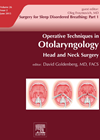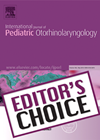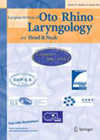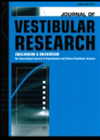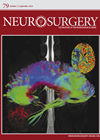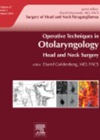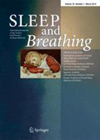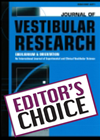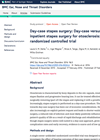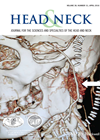
Journal Reviews
Use of topical steroids and antibiotics, compared to systemic antibiotics in the treatment of acute rhinusinusitis
Acute rhinusinusitis is mainly initiated by viral infections. Bacterial infection is usually superadded. The inflammatory cascade upregulates the pro-inflammatory mediators resulting in pain, nasal obstruction and nasal discharge. Local application of steroids and antibiotics could provide a higher concentration of...
Surgical options for children with OSA
This paper looks at the surgical management of OSA in children and approaches the method of patient selection initially. They discuss the role of polysomnography in that it is part of the AAOHNS criteria in those patients with OSA symptoms...
Is there a ‘best’ ventilation tube?
Studies on grommet materials and sizes are not exactly new but this was a well-designed randomized study in Sweden with some useful findings. The extrusion rate and complications associated with four different ventilation tubes (grommets) were assessed prospectively in 400...
CT chest surveillance for oral cancer patients
Computed tomography (CT) imaging of the chest is performed as part of the assessment of patients with oral cancer to exclude pulmonary metastasis or synchronous cancer. This process is integral to staging of the disease. In some cases, non-specific pulmonary...
Titanium bobbins are prone to water penetration
There is limited evidence that swimming with grommets increases ear infections and most clinicians advise swimming with ventilation tubes is acceptable. Concerns may persist especially among parents. This paper evaluates the amount of different liquids (soapy water, sea water, chlorinated...
Posturography in persistent postural-perceptual dizziness (PPPD)
Those in neuro-otology practice will be familiar with PPPD now appearing in the forthcoming beta edition of ICD-11. This condition combines the symptoms of phobic postural vertigo and chronic subjective dizziness in which anxiety plays a part. The underlying hypothesis...
Preserving hearing in NF2 patients
Neurofibromatosis type 2 (NF2) is known to result in bilateral hearing loss, even when there is no significant tumour growth. The cause is postulated to be multifactorial: stretching and compression of the cochlear nerve by the tumour, impairment of labyrinthine...
Carotid paragangliomas and their management
Paragangliomas in the head and neck are most frequently associated with the carotid artery, classically at its bifurcation and splaying the internal and external vessels. Despite their commonality at this site, large studies of these rare tumours are still lacking...
Outcome of TORS to tongue base and epiglottis in patients with OSA intolerant of conventional treatment
The use of transoral robotic surgery (TORS) in ENT is rather controversial, but the use of robotic surgery for obstructive sleep apneoa (OSA), makes it doubly so. Previous studies on TORS in OSA have been performed with other types of...
Type 2 diabetes and BPPV
Previous research has shown an association between BPPV and certain medical conditions such as hypertension, hyperlipidaemia and type 1 diabetes. The authors in this retrospective observational study investigated the interaction between BPPV and type 2 diabetes by examining the ‘role...
Day care stapes surgery
This paper reports on a proposed unblinded, randomised controlled trial in which the hearing outcomes after inpatient stapes surgery will be compared with those after day case stapes surgery. The study is currently in the recruitment stage and plans to...
Best timing for post-treatment PET-CT scans in head and neck cancer
Unfortunately we know that the recurrence rate for head and neck cancer can be high, up to 30-50% in some series. These recurrences tend to occur within the first two years following treatment. Optimal surveillance strategies to detect recurrences early...


